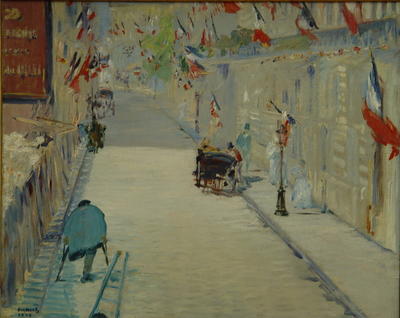From Gerald Nicosia in the
San Francisco Chronicle "
Phil Cousineau has long been a powerful presence in the San Francisco literary scene, but he is best known as a filmmaker and writer who has carried on and reinterpreted the work of Joseph Campbell, especially regarding the omnipresent influence of myth in modern life.
 |
Phil Cousineau
photo by Gregg Chadwick |
Last year he also had a best- seller with "The Way Things Are," a collaboration with the religious philosopher Huston Smith. All this while Cousineau has been publishing -- in very limited editions -- collections of his own poetry, whose influence has been noted by a great many other major poets of his generation, including Antler and Jane Hirshfield. But his latest collection,
The Blue Museum (Sisyphus Press; 152 pages; $12 paperback; P.O. Box 330098, San Francisco, CA 94133), comprising poems selected from his entire life's work, is a book readers will be unlikely to forget.
 |
l to r: Gregg Chadwick, Huston Smith, Cassiel Chadwick and Phil Cousineau
photo by M.V. Heilemann
|
"The Blue Museum" contains the whole story of one man's life, the way poets seldom do it any more -- the way Wordsworth or Whitman did it, say, or William Carlos Williams, or even, more recently, Charles Olson. Cousineau writes in long, conversational, deceptively casual lines that quickly add up to an explosive critical mass. At times these epiphanies are dazzling, as when Cousineau recalls in "Go-Kart" the first time in childhood he took note of his own being in the world:
My nostrils fill with the smell of freshly mowed grass,
my eyes smart with streaming sunlight, my fingertips warm
to the touch of just-sawed two-by-fours
my thin arms sag under the weight of tools
hauled in from my dad's hand-made,
silver-painted workbench.
All at once --
in one swift moment --
I know I know
I know I'm knowing I'm alive
and not not alive, not dead,
not like my recently deceased grandfather,
not unborn like our neighbor's nine stillborn babies.
Yet Cousineau is equally adept at the sort of short-lined, concise, clear- eyed appreciations of nature perfected by Gary Snyder, whose influence shows in poems like "The Meaning of Happiness," an exquisite lyric about the harmony between man, woman and unborn child:
The swift flow of salmon
in brisk rivers
loud with moonlight
The murmur of lovers
Calling the restless one
In her teeming belly
It takes courage to write poems about one's living wife (Kenneth Rexroth was one of the few before Cousineau to do it superbly), but perhaps even more courage to write about those other giants in our lives, our parents. Cousineau writes of his dead father in "Slow Dissolve":
he was trying to tell me he was dying,
"I don't know how much longer I have left."
Just thirty-two, I didn't believe a guy
could lose his father that young.
I huddled deep into my black leather jacket
that still stank of motorcycle fumes,
felt my heart shrink-wrapped by his cracking voice,
the icy finality with which we shook hands
in the doorway of his apartment.
"The Blue Museum" contains several equally moving poems about Cousineau's role as father himself to his young son, Jack.
 |
| Jack Cousineau |
In one poignant poem, driving his son home from Sonoma at night, he is torn by the boy's terrible fear of the darkness, and finds himself lying, as his own father had, to comfort him: "Only then did the words spring free,/ the lie I told to tell the longer truth, / "Don't worry, buddy, we'll be home soon./ I won't let the darkness hurt you. " In this poem, as in so many others, Cousineau is able to draw profound questions out of ordinary daily life, and here he asks with astonishing simplicity: "How do you lead a child/ into the darkness and out again?"
"The Blue Museum" contains poetic tributes to a whole array of artists and heroes who have inspired Cousineau in the literal odyssey of his life, as he has wandered across the globe for decades. There are poems about John Lennon, Anne Frank, Ray Charles, Anna Akhmatova, the bargirls of Naples and the most beautiful ode to Van Gogh I have ever read, "Vincent's Search," in which the poet, perhaps thinking of his own poetry as well, speculates that the painter "never/ searched for more than frankly green, frankly blue landscapes,/ only longed to paint an olive orchard so vivid others/ would want to harvest it, a starry night sky so alive anyone/ who gazed at it would long to lay themselves down/ and sleep the sleep of the ages below it."
Phil Cousineau's latest:
Native American Spirituality: Huston Smith and Phil Cousineau in Conversation















 Hisako Hibi
Hisako Hibi










